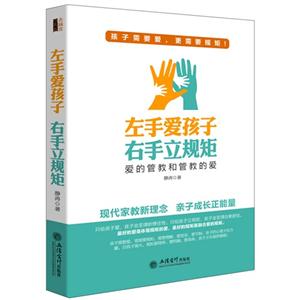剑桥大学出版社培训类/剑桥雅思官方真题集11

|
剑桥大学出版社培训类/剑桥雅思官方真题集11作者:剑桥大学考试委员会 开 本:其他 书号ISBN:9781316612309 定价:110.0 出版时间:2016-03-01 出版社: |
剑桥大学出版社培训类/剑桥雅思官方真题集11 本书特色
本书由以下内容构成:● 4套完整的培训类雅思全真试题● 各种题型的全面介绍以及剑桥大学考试委员会采用的评分系统解析● 习题答案和听力录音文本● 可供下载的听力录音材料
剑桥大学出版社培训类/剑桥雅思官方真题集11 内容简介
本书由以下内容构成:
● 4套完整的培训类雅思全真试题
● 各种题型的全面介绍以及剑桥大学考试委员会采用的评分系统解析
● 习题答案和听力录音文本
● 可供下载的听力录音材料
剑桥大学出版社培训类/剑桥雅思官方真题集11 目录
The International English Language Testing System (IELTS) is widely recognised as a reliable means of assessing the language ability of candidates who need to study or work where English is the language of communication. These Practice Tests are designed to give future IELTS candidates an idea of whether their English is at the required level. IELTS is owned by three partners, the University of Cambridge ESOL Examinations, the British Council and IDP Education Pty Limited (through its subsidiary company, IELTS Australia Pty Limited). Further information on IELTS can be found on the IELTS website (www.ielts.org). WHAT IS THE TEST FORMAT? IELTS consists of four components. All candidates take the same Listening and Speaking tests. There is a choice of Reading and Writing tests according to whether a candidate is taking the Academic or General Training module. AcademicFor candidates wishing to study at undergraduate or postgraduate levels, and for those seeking professional registration. General TrainingFor candidates wishing to migrate to an English-speaking country (Australia, Canada, New Zealand, UK), and for those wishing to train or study at below degree level The test components are taken in the following order: Listening4 sections, 40 items approximately 30 minutesAcademic Reading3 sections, 40 items60 minutesorGeneral Training Reading3 sections, 40 items60 minutesAcademic Writing2 tasks60 minutesorGeneral Training Writing2 tasks60 minutesSpeaking11 to 14 minutesTotal Test Time2 hours 44 minutes ListeningThis test consists of four sections, each with ten questions. The first two sections are concerned with social needs. The first section is a conversation between two speakers and the second section is a monologue. The final two sections are concerned with situations related to educational or training contexts. The third section is a conversation between up to four people and the fourth section is a monologue. A variety of question types is used, including: multiple choice, matching, plan/map/diagram labelling, form completion, note completion, table completion, flow-chart completion, summary completion, sentence completion, short-answer questions. Candidates hear the recording once only and answer the questions as they listen. Ten minutes are allowed at the end for candidates to transfer their answers to the answer sheet. Academic ReadingThis test consists of three sections with 40 questions. There are three texts, which are taken from journals, books, magazines and newspapers. The texts are on topics of general interest. At least one text contains detailed logical argument. A variety of question types is used, including: multiple choice, identifying information (True/False/Not Given), identifying writer’s views/claims (Yes/No/Not Given), matching information, matching headings, matching features, matching sentence endings, sentence completion, summary completion, note completion, table completion, flow-chart completion, diagram label completion, short-answer questions. General Training ReadingThis test consists of three sections with 40 questions. The texts are taken from notices, advertisements, leaflets, newspapers, instruction manuals, books and magazines. The first section contains texts relevant to basic linguistic survival in English, with tasks mainly concerned with providing factual information. The second section focuses on the work context and involves texts of more complex language. The third section involves reading an extended text, with a more complex structure, but with the emphasis on descriptive and instructive rather than argumentative texts. A variety of question types is used, including: multiple choice, identifying information (True/False/Not Given), identifying writer’s views/claims (Yes/No/Not Given), matching information, matching headings, matching features, matching sentence endings, sentence completion, summary completion, note completion, table completion, flow-chart completion, diagram label completion, short-answer questions. Academic WritingThis test consists of two tasks. It is suggested that candidates spend about 20 minutes on Task 1, which requires them to write at least 150 words, and 40 minutes on Task 2, which requires them to write at least 250 words. Task 2 contributes twice as much as Task 1 to the Writing score. Task 1 requires candidates to look at a diagram or some data (graph, table or chart) and to present the information in their own words. They are assessed on their ability to organise, present and possibly compare data, describe the stages of a process, describe an object or event, or explain how something works. In Task 2 candidates are presented with a point of view, argument or problem. They are assessed on their ability to present a solution to the problem, present and justify an opinion, compare and contrast evidence and opinions, and evaluate and challenge ideas, evidence or arguments. Candidates are also assessed on their ability to write in an appropriate style. General Training WritingThis test consists of two tasks. It is suggested that candidates spend about 20 minutes on Task 1, which requires them to write at least 150 words, and 40 minutes on Task 2, which requires them to write at least 250 words. Task 2 contributes twice as much as Task 1 to the Writing score. In Task 1 candidates are asked to respond to a given situation with a letter requesting information or explaining the situation. They are assessed on their ability to engage in personal correspondence, elicit and provide general factual information, express needs, wants, likes and dislikes, express opinions, complaints, etc. In Task 2 candidates are presented with a point of view, argument or problem. They are assessed on their ability to provide general factual information, outline a problem and present a solution, present and justify an opinion, and evaluate and challenge ideas, evidence or arguments. Candidates are also assessed on their ability to write in an appropriate style. More information on assessing both the Academic and General Training Writing tests, including the Writing Assessment Criteria (public version), is available on the IELTS website. SpeakingThis test takes between 11 and 14 minutes and is conducted by a trained examiner. There are three parts: Part 1The candidate and the examiner introduce themselves. Candidates then answer general questions about themselves, their home/family, their job/studies, their interests and a wide range of similar familiar topic areas. This part lasts between four and five minutes. Part 2The candidate is given a task card with prompts and is asked to talk on a particular topic. The candidate has one minute to prepare and they can make some notes if they wish, before speaking for between one and two minutes. The examiner then asks one or two questions on the same topic. Part 3The examiner and the candidate engage in a discussion of more abstract issues which are thematically linked to the topic in Part 2. The discussion lasts between four and five minutes. The Speaking test assesses whether candidates can communicate effectively in English. The assessment takes into account Fluency and Coherence, Lexical Resource, Grammatical Range and Accuracy, and Pronunciation. More information on assessing the Speaking test, including the Speaking Assessment Criteria (public version), is available on the IELTS website. HOW IS IELTS SCORED? IELTS results are reported on a nine-band scale. In addition to the score for overall language ability, IELTS provides a score in the form of a profile for each of the four skills (Listening, Reading, Writing and Speaking). These scores are also reported on a nine-band scale. All scores are recorded on the Test Report Form along with details of the candidate’s nationality, first language and date of birth. Each Overall Band Score corresponds to a descriptive statement which gives a summary of the English language ability of a candidate classified at that level. The nine bands and their descriptive statements are as follows: 9 Expert User - Has fully operational command of the language: appropriate, accurate and fluent with complete understanding.8 Very Good User - Has fully operational command of the language with only occasional unsystematic inaccuracies and inappropriacies. Misunderstandings may occur in unfamiliar situations. Handles complex detailed argumentation well.7 Good User - Has operational command of the language, though with occasional inaccuracies, inappropriacies and misunderstandings in some situations. Generally handles complex language well and understands detailed reasoning.6 Competent User - Has generally effective command of the language despite some inaccuracies, inappropriacies and misunderstandings. Can use and understand fairly complex language, particularly in familiar situations.5 Modest User - Has partial command of the language, coping with overall meaning in most situations, though is likely to make many mistakes. Should be able to handle basic communication in own field.4 Limited User - Basic competence is limited to familiar situations. Has frequent problems in understanding and expression. Is not able to use complex language.3 Extremely Limited User - Conveys and understands only general meaning in very familiar situations. Frequent breakdowns in communication occur.2 Intermittent User - No real communication is possible except for the most basic information using isolated words or short formulae in familiar situations and to meet immediate needs. Has great difficulty understanding spoken and written English.1 Non User - Essentially has no ability to use the language beyond possibly a few isolated words.0 Did not attempt the test - No assessable information provided. Most universities and colleges in the United Kingdom, Australia, New Zealand, Canada and the USA accept an IELTS Overall Band Score of 6.0-7.0 for entry to academic programmes. MARKING THE PRACTICE TESTS Listening and Reading Each question in the Listening and Reading tests is worth one mark. Questions which require letter / Roman numeral answers For questions where the answers are letters or Roman numerals, you should write only the number of answers required. For example, if the answer is a single letter or numeral you should write only one answer. If you have written more letters or numerals than are required, the answer must be marked wrong. Questions which require answers in the form of words or numbers Answers may be written in upper or lower case. Words in brackets are optional - they are correct, but not necessary. Alterative answers are separated by a slash (/).
外语 英语考试 雅思IELTS
在线阅读
- 最新内容
- 相关内容
- 网友推荐
- 图文推荐
零零教育社区:论坛热帖子
| [高考] 2022 西安电子科技大学《软件工程》大作业答案 (2022-04-25) |
| [家长教育] 孩子为什么会和父母感情疏离? (2019-07-14) |
| [教师分享] 给远方姐姐的一封信 (2018-11-07) |
| [教师分享] 伸缩门 (2018-11-07) |
| [教师分享] 回家乡 (2018-11-07) |
| [教师分享] 是风味也是人间 (2018-11-07) |
| [教师分享] 一句格言的启示 (2018-11-07) |
| [教师分享] 无规矩不成方圆 (2018-11-07) |
| [教师分享] 第十届全国教育名家论坛有感(二) (2018-11-07) |
| [教师分享] 贪玩的小狗 (2018-11-07) |






